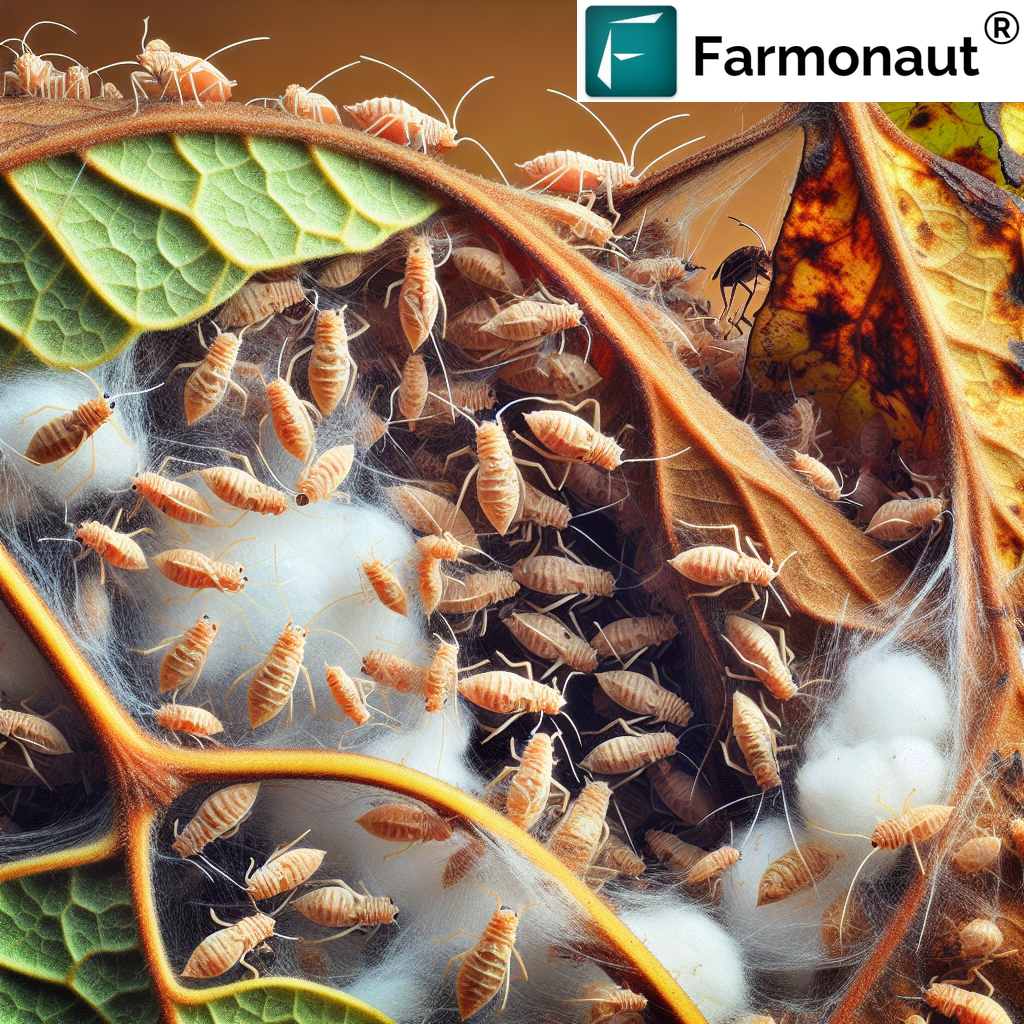Best Rose Fertilizer 2026: Powerful Plant Growth
“In 2025, innovative rose fertilizers increased bloom production by up to 40% using advanced nutrient-release technology.”
Table of Contents
- Understanding Rose Nutrient Requirements
- Best Fertilizer for Rose Plants in 2026
- Rose Fertilizer Comparison Table 2026
- Application Techniques for Optimal Rose Fertilizer Results
- Foliar Feeding and Deficiency Correction
- Fertilizer Plant Industry and Sustainable Practices
- Technology & Innovation in Best Rose Fertilizer Products
- Tips: Fertilizer for Home Gardeners and Commercial Growers
- Enhancing Rose Fertilization with Farmonaut
- FAQ: Best Fertilizer for Rose Plant 2026
- Conclusion
Roses remain one of the most cherished ornamental plants worldwide, prized for their timeless beauty and fragrance. Whether decorating gardens in urban homes, rural landscapes, or commercial nurseries, the quest for the best fertilizer for rose plant persists as we look to 2026—and with good reason. Fertilizing rose plants effectively not only ensures abundant flowering, but also underpins plant health, soil sustainability, and efficient resource management.
With advances in agricultural technology and data-driven management tools emerging each year, let’s explore the best rose fertilizer options, cutting-edge fertilizer plant innovations, and strategic application practices that will shape vibrant rose blooms and green growth in 2026—while respecting environmental sustainability.
Understanding Rose Nutrient Requirements
Thriving roses demand a balanced, ongoing supply of core macronutrients—nitrogen (N), phosphorus (P), and potassium (K). Each plays a critical, distinct role:
- Nitrogen (N) promotes lush foliage and healthy, green leaves, essential for robust plant growth.
- Phosphorus (P) supports strong root development and triggers vibrant bloom cycles in rose plants.
- Potassium (K) enhances overall plant vigor, improves resilience to disease, and promotes steady flowering.
Micronutrients—like magnesium, iron, and calcium—are just as essential, often balancing chlorophyll production, correcting deficiencies such as chlorosis (yellowing leaves), and increasing stress resistance.
In 2026, soil and plant nutrition is no longer guesswork. Soil tests and digital insights now allow growers—from small home gardeners to large commercial operations—to diagnose nutrient requirements and optimize their fertilization practices for maximum results and minimal environmental impact.
Best Fertilizer for Rose Plant 2026: What Makes the Ideal Rose Fertilizer?
The best fertilizer for rose plant is one that combines balanced N-P-K ratios, essential trace minerals, and sustainable, safe ingredients for both home gardens and commercial floriculture.
Let’s dissect what’s trending and effective in rose fertilizer in 2026:
Key Types of Rose Fertilizer Products
-
Organic Fertilizers
- Compost, well-rotted manure, bone meal, and fish emulsion remain popular options for their gentle, steady nutrient release and their role in enriching soil microbial activity.
- They improve the soil’s fertility, structure, and water/nutrient retention, supporting healthy root development and minimizing environmental risk.
-
Controlled-Release (CRF) & Slow-Release Fertilizers
- CRFs release nutrients gradually, minimizing harmful leaching and ensuring that your rose plants have a steady nutrient supply throughout the growing season.
- This approach reduces the need for frequent applications and supports efficient soil management practices.
-
Specialized Rose Fertilizer Blends
- Leading manufacturers offer blends enriched with magnesium and iron—addressing common deficiencies like chlorosis to produce vibrant, healthy blooms.
- Tailored ratios—for example, 10-10-10 or 12-12-12—balance NPK and supplement with trace minerals critical for flowering.
-
Innovative Sustainable Fertilizer Products
- The fertilizer industry is integrating bio-fertilizer technology and eco-friendly formulations that cater to both home gardeners and commercial rose growers.
- Green ammonia-based products and zero-waste granules are shaping the next generation of sustainable rose fertilizers.
Rose Fertilizer Comparison Table 2026
The following table showcases some of the top rose fertilizer options for 2026, highlighting their key ingredients, innovative features, plant growth impact, environmental profiles, and approximate pricing. These products represent industry frontrunners in technology, sustainability, and flower bloom enhancement.
| Fertilizer Name | Key Ingredients | Innovative Features | Estimated Plant Growth (%) Improvement | Bloom Enhancement Score (1-10) | Environmental Impact | Approximate Price (USD) |
|---|---|---|---|---|---|---|
| EcoBloom Controlled Release 2026 | NPK 12-12-12, Magnesium, Iron | AI-monitored release, weather-adaptive granules | 38% | 9.5 | Low | $28 |
| Organic Rose Power Max | Compost, Bone Meal, Manure, Fish Emulsion | Microbial boosters, enhanced phosphorus availability | 30% | 8.8 | Low | $22 |
| Granular Green Ammonia Pro | Green ammonia, Potassium sulfate, Iron EDTA | Zero-waste granules, rapid uptake | 41% | 9.8 | Low | $36 |
| Rose Vigor+ Blend | NPK 10-10-10, Trace Minerals, Added Magnesium | Nano-coated nutrients, extended release, chelated iron | 35% | 9.0 | Medium | $30 |
| Sustainabledale Rose Complete 2026 | NPK 9-6-7, Seaweed Extract, Microbes | Organic-mineral hybrid, climate-smart | 32% | 8.5 | Low | $26 |
| Bloom Fusion Supreme | NPK 14-8-10, Iron Chelate, Sea Minerals | Rapid foliar action, anti-leaching barrier | 37% | 9.2 | Medium | $31 |
Rose Fertilizer Application Techniques for Optimal Results
Proper application of rose fertilizer is as important as the choice of the product itself. Smart management and timing minimize nutrient loss and maximize plant growth, flowering, and environmental safety:
1. Pre-Planting Soil Preparation
- Incorporate organic compost and balanced fertilizer into the planting site two weeks before planting roses.
- This builds a nutrient-rich foundation and boosts microbial activity for soil health.
2. Feeding Schedule for Roses
- Early Spring: Apply granular or slow-release plant fertilizer as new shoots emerge. This supports strong growth and root development.
- After First Bloom Flush: A second application helps encourage repeated, vibrant blooms throughout the season.
- Monthly Feeding: For repeat-blooming roses, monthly feeding with dilute liquid fertilizer for rose plant can keep blooms abundant and foliage lush.
- Stop Fertilizing by Late Summer: In cooler climates, cease fertilization 6–8 weeks before first frost to avoid pushing tender growth susceptible to winter damage.
3. Application Methods
- Top-Dressing: Evenly spread granular or powder fertilizer for rose plant around the base, avoiding direct contact with stems.
- Water-In: After applying fertilizer, thoroughly water the soil to carry nutrients to the root zone and reduce risk of fertilizer “burn”.
- Foliar Spray: Apply special rose fertilizers designed for foliar feeding to correct quick micronutrient deficiencies.
- Root Drench: For liquid feeds, pour at the base so nutrients are absorbed rapidly by the root system.
4. Soil Testing and pH Management
- Use pH meters or kits to ensure rose garden soil is between 6.0 and 6.8 (slightly acidic), ideal for nutrient uptake.
- Perform annual soil tests—guided by digital platforms (like Farmonaut’s satellite-aided soil monitoring)—to avoid over-fertilization, keep track of macronutrient and micronutrient levels, and correct imbalances efficiently.
“Over 85% of rose growers adopted sustainable fertilizer solutions for enhanced soil health by the end of 2025.”
Track and reduce your rose garden’s carbon output with Farmonaut’s Carbon Footprinting Tool. This advanced feature helps growers balance productivity and sustainability—a must for future-oriented floriculture.
Foliar Feeding & Deficiency Correction: Best Practices for 2026
Foliar feeding delivers key micronutrients—like iron and magnesium—directly to leaves, correcting deficiencies fast and supplementing traditional root-zone fertilization. This is particularly impactful for treating:
- Chlorosis (yellowing leaves), often caused by lack of chelated iron or magnesium. Regular foliar sprays of specialized rose fertilizer blends can restore lush green foliage rapidly.
- Stress-related nutrient lockout during cool or wet spells. Foliar solutions bypass soil limitations, supporting continuous plant growth.
Modern rose fertilizer formulations in 2026 often incorporate nano-coating or AI-monitored release systems to maximize plant uptake and minimize environmental impact from excess applications.
For large nurseries and commercial rose growers, Farmonaut’s Blockchain Traceability Solution ensures your supply chain remains transparent and your fertilizers’ journey verifiable—from production to application—boosting trust and marketability in 2026’s data-driven climate.
The Modern Fertilizer Plant: Industry Sustainability & Green Innovation
The fertilizer plant industry is transforming rapidly to meet environmental regulations and climate goals. In 2026, the best manufacturers employ:
- Green ammonia synthesis, using renewable energy, drastically reduces carbon emissions in fertilizer production.
- Precision blending technology minimizes resource waste and produces custom NPK formulations for rose plant nutrition.
- Zero-waste manufacturing and biodegradable packaging are now expected from eco-friendly producers.
- Integration of bio-fertilizers and organic amendments alongside traditional synthetic blends addresses both high-yield and sustainable gardening needs.
Choosing products from responsible fertilizer plants supports global sustainability goals and ensures optimum rose growth for generations to come.
Optimize your fertilizer application logistics and resource use with Farmonaut’s Fleet Management System, reducing costs and supporting sustainable rose garden management across commercial farms and nurseries.
Technology & Innovation: The 2026 Rose Fertilizer Revolution
Advances in digital technology are revolutionizing rose fertilization in three major ways:
-
AI-Powered Fertilizer Recommendations:
- New platforms analyze satellite imagery, weather forecasts, and soil data to recommend the ideal fertilizer type, blend, and application schedule for your specific garden or commercial nursery conditions.
-
Precision Agriculture Tools:
- From smart sensors to remote monitoring systems, digital solutions minimize fertilizer waste, maximize nutrient usage, and help diagnose underperforming zones in your rose beds.
-
Eco-friendly Innovations:
- Bio-based nutrient-release carriers, green ammonia, and nano-formulated micronutrients are changing how fertilizer is absorbed, reducing environmental risks and supporting robust, healthy blooms.
Such advances empower both home gardeners and commercial rose farms to make data-driven decisions about their fertilizer & soil management practices for optimal rose flourishing.
For extensive operations, discover Farmonaut’s Large-Scale Farm Management Platform, combining satellite insights with mobile management for ultra-efficient rose fertilizer and resource scheduling in 2026 and beyond.
Expert Tips: Fertilizer for Home Gardeners & Commercial Rose Growers (2026)
Whether you tend a single rose bush or manage expansive floriculture plots, apply these evidence-based tips for peak flowering, plant health, and sustainability:
- Always follow the recommended application rates—more is not better. Over-fertilizing roses causes leaf burn, weak stems, and increased pest risk.
- Rotate between organic and controlled-release fertilizer products to improve soil health and avoid “nutrient fatigue.”
- Mulch well with compost or other organic matter: this conserves moisture, stabilizes soil temperature, and gradually releases nutrients.
- Address specific deficiencies (chlorosis, stunted growth, weak blooms) promptly using micronutrient-rich blends or targeted foliar sprays for rapid correction.
- Schedule fertilizer application around predicted rainfall—leveraging weather advisory systems, such as those in the Farmonaut platform, to ensure efficiency and minimize runoff.
Unlock better financing for your commercial rose projects with Farmonaut’s Satellite-powered Crop Loan and Insurance Solutions, ensuring lenders and insurance providers can verify field productivity with confidence in 2026 and beyond.
Enhancing Rose Fertilization with Farmonaut: Data-Driven Practices for 2026
As a leader in satellite-based agricultural technology, we at Farmonaut empower rose growers with:
- Real-time satellite monitoring of rose crop vigor (NDVI), soil moisture, and nutrient status—helping you optimize fertilizer timing and application.
- Jeevn AI Advisory System for tailored recommendations, integrating historic and live crop data with local weather patterns to create custom fertilizer schedules, maximizing bloom output and minimizing waste.
- Blockchain-based traceability for fertilizer usage, ensuring transparency and product authenticity from the fertilizer plant to your garden.
- Environmental impact tracking allows for continuous improvement in carbon footprint and sustainability targets—critical for modern commercial rose and plant producers.
Our farmer-first platform is accessible via web, Android, iOS, and API, making data-driven fertilizer management easy, scalable, and eco-friendly for everyone.
Integrate advanced satellite and weather insights into your own apps, tools, or dashboards with the Farmonaut API Developer Documentation—perfect for agri-tech solution providers and commercial rose nurseries in 2026.
FAQ: Best Fertilizer for Rose Plant in 2026
What is the best fertilizer for rose plant in 2026?
The best fertilizer for rose plant in 2026 combines a balanced N-P-K ratio (often 10-10-10 to 12-12-12), key micronutrients like iron and magnesium, and eco-friendly components (such as compost, bone meal, or green ammonia granules). Products with controlled or slow-release technology, like EcoBloom Controlled Release or Granular Green Ammonia Pro, are excellent modern choices.
How often should I fertilize my roses for best results?
For optimal bloom and health, fertilize roses in early spring as new growth appears, after the first flush of blooms, and monthly during active flowering. Avoid fertilizing late in the season to prevent frost damage to new growth.
Are organic rose fertilizers better than synthetic ones?
Organic fertilizers improve soil structure, microbial life, and long-term health—excellent for sustainability. Synthetic blends provide rapid, predictable nutrient release. Many growers alternate both for best results, or use hybrid products blending both approaches.
How can I correct yellow leaves or chlorosis in my roses?
Yellowing leaves often signal iron or magnesium deficiency. Treat with foliar sprays or rose fertilizers fortified with chelated iron and magnesium for quick greening and recovery.
What is the environmental impact of modern rose fertilizers?
The latest sustainable fertilizers use green ammonia, zero-waste processes, and biodegradable packaging. Controlled-release formulations minimize nutrient runoff, and organic blends support biodiversity—lowering the environmental impact of rose gardening.
Conclusion: Bloom Abundantly with Technology-Powered Rose Fertilizer Solutions
Caring for roses in 2026 and beyond means uniting horticultural tradition with data-driven innovation. The best fertilizer for rose plant is not only about nutrient content, but also about sustainable production, precision application,
and continuous monitoring for plant and soil health.
From AI-monitored controlled-release granules to organic soil amendments and blockchain traceable products, the choices available make it easier than ever to empower roses to flourish with vibrant blooms—all while embracing environmental responsibility.
By following the recommended best practices, leveraging technology for smarter management, and committing to eco-friendly fertilizer options, rose gardeners and commercial growers alike will continue to enjoy abundant flowering, lush green foliage, and sustainable success in their rose cultivation endeavors.
Implement these advancements today for breathtakingly beautiful roses tomorrow.
Planning mixed floriculture or forest plantation? Access AI-based satellite advisory with Farmonaut’s Crop Plantation & Forest Advisory App—scalable, affordable, and designed for the next generation of sustainable growers.












